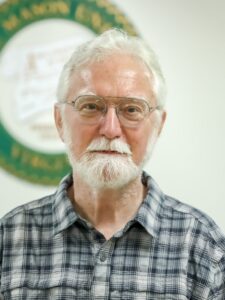
Refuge in America. So many hopes of so many people in the world rest on those three words. So much of American history rests on those three words. Our nation’s founders saw America as a land of refuge, whether it was George Washington’s hope that the country could be a “safe and agreeable Asylum to the virtuous and persecuted parts of mankind” or Thomas Jefferson’s hope that it could be a “sanctuary” from the “misrule of Europe.” It is hard to imagine the United States without its role as a place of refuge for those fleeing political, religious, or cultural persecution. Often the reasons for providing refuge have been directly related to U.S. actions — for example, refuge for former allies from collapsed pro-American governments in Vietnam and Afghanistan. At other times, the reasons for providing refuge have been less directly related to U.S. actions and reflect a more general humanitarian response to wars, dictatorial regimes, or natural disasters.
America has always been a land of refuge and will continue to be so. That is the easy part of any debate about refugee and asylum issues. The more difficult question is how many of what kind of people should be provided refuge. That question has been addressed by the United States in two main ways. First has been a modestly-sized formal refugee program — about 10 percent of overall immigration—designed to be open to the whole world and consistent with the goals of the UN High Commissioner for Refugees (UNHCR).
Second has been a broad set of more flexible, ad hoc programs that have addressed specific American concerns: religious minorities in Russia, Cubans fleeing a still-communist country, natural disasters in Haiti and Central America. Those programs mostly take the form of either temporary status in the United States (various forms of parole and protected status) or special immigration programs: for example, Cubans through the Cuban Adjustment Act and Afghan and Iraqi interpreters through Special Immigrant Visas. The numbers provided refuge through such programs have varied depending on world events and the interests of particular administrations — sharply down under the Trump Administration, sharply up under the Biden Administration.
None of these programs, however, addresses one particular and primal refuge situation. Somebody simply shows up at the door, uninvited and often unknown. The “door” may be at the border or anywhere inside the United States.
The number of people provided refuge through all these options can be at least partially controlled by adding or deleting programs or simply changing program criteria and procedures. None of these programs, however, addresses one particular and primal refuge situation. Somebody simply shows up at the door, uninvited and often unknown. The “door” may be at the border or anywhere inside the United States. There is no referral from the United Nations High Commissioner for Refugees (UNHCR), no channel of “lily pads” and “safe havens” (as for Afghans), no U.S. ships picking up people at sea (as for Vietnamese), no international conferences on regional conflicts that generate promises of resettlement slots.
These people showing up “uninvited” are refugees in the general sense of the word. In legal terms, however, they are “asylum seekers.” If approved, they become “asylees” rather than “refugees.” This separate asylum track is based in the U.S. Refugee Act of 1980. That Act, following the UNHCR, has specific grounds for deserving refuge, leading to especially contentious arguments about whether the fear and suffering causing flight are a direct result of government persecution in countries of origin — or of a government’s utter failure to protect its own people.
Furthermore, asylum processing is inherently legalistic and requires that each individual case be considered on its own merits. The perceived problem today is that this asylum system is out of control. The numbers are high and threaten to become higher. Yet each case takes time, often years. In the interim, releasing asylum-seekers into the community—especially if they have relatives—is more humane and certainly more cost-effective than incarcerating asylum-seekers for the duration of their cases.
That asylum system is facing high case numbers that make its individual case approach excruciatingly slow—at least without greatly expanded resources that the U.S. Congress is unlikely to provide.
The “asylum problem” in the United States, then, reflects a quandary. Asylum is a laudable and legally mandated system for those individuals who do not fit easily into other U.S. options for providing refuge. However, that asylum system is facing high case numbers that make its individual case approach excruciatingly slow — at least without greatly expanded resources that the U.S. Congress is unlikely to provide. The Biden Administration is attempting to alleviate this inherent quandary by expanding other options — most of them temporary — so that potential asylum seekers have broader and more regularized options.
Predictably, the results are mixed, and the fundamental quandary remains. The individuality of asylum cases, including due process, does not mesh well with high numbers, much less high and rising numbers. That is indeed a problem. But it is no reason to ignore a fundamental human right that also happens to be a U.S. legal requirement as well as a fundamental value underlying our Republic.
David Haines is a Professor Emeritus at George Mason University and author of Safe Haven: A History of Refugees in America.




